
Equipment rental company United Rentals (NYSE: URI) reported Q2 CY2025 results beating Wall Street’s revenue expectations, with sales up 4.5% year on year to $3.94 billion. The company expects the full year’s revenue to be around $15.95 billion, close to analysts’ estimates. Its non-GAAP profit of $10.47 per share was 0.6% below analysts’ consensus estimates.
Is now the time to buy United Rentals? Find out by accessing our full research report, it’s free.
United Rentals (URI) Q2 CY2025 Highlights:
- Revenue: $3.94 billion vs analyst estimates of $3.91 billion (4.5% year-on-year growth, 0.8% beat)
- Adjusted EPS: $10.47 vs analyst expectations of $10.54 (0.6% miss)
- Adjusted EBITDA: $1.81 billion vs analyst estimates of $1.78 billion (45.9% margin, 1.8% beat)
- The company slightly lifted its revenue guidance for the full year to $15.95 billion at the midpoint from $15.85 billion (beat)
- EBITDA guidance for the full year is $7.38 billion at the midpoint, above analyst estimates of $7.28 billion
- Operating Margin: 25.4%, down from 26.6% in the same quarter last year
- Free Cash Flow Margin: 2.9%, down from 4.9% in the same quarter last year
- Market Capitalization: $51.42 billion
Company Overview
Owning the largest rental fleet in the world, United Rentals (NYSE: URI) provides equipment rental and related services to construction, industrial, and infrastructure industries.
Revenue Growth
A company’s long-term sales performance is one signal of its overall quality. Any business can put up a good quarter or two, but many enduring ones grow for years. Luckily, United Rentals’s sales grew at an impressive 11.8% compounded annual growth rate over the last five years. Its growth beat the average industrials company and shows its offerings resonate with customers, a helpful starting point for our analysis.
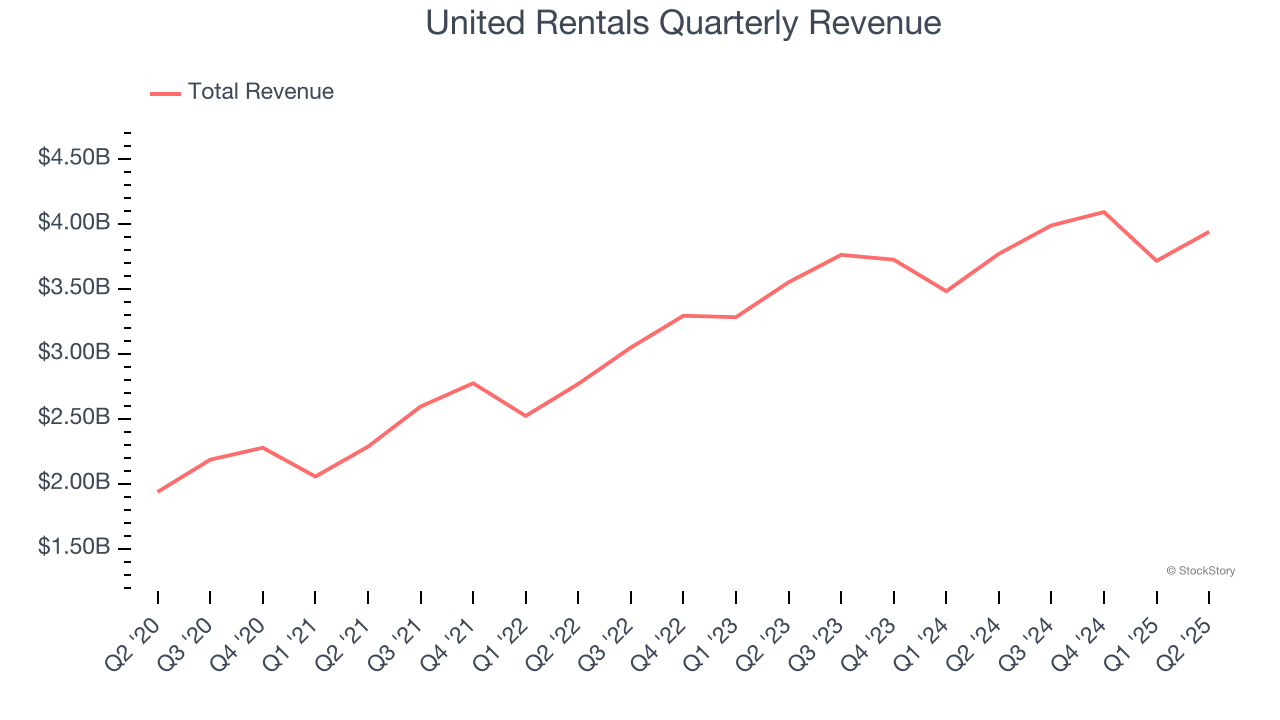
Long-term growth is the most important, but within industrials, a half-decade historical view may miss new industry trends or demand cycles. United Rentals’s annualized revenue growth of 9.3% over the last two years is below its five-year trend, but we still think the results suggest healthy demand. 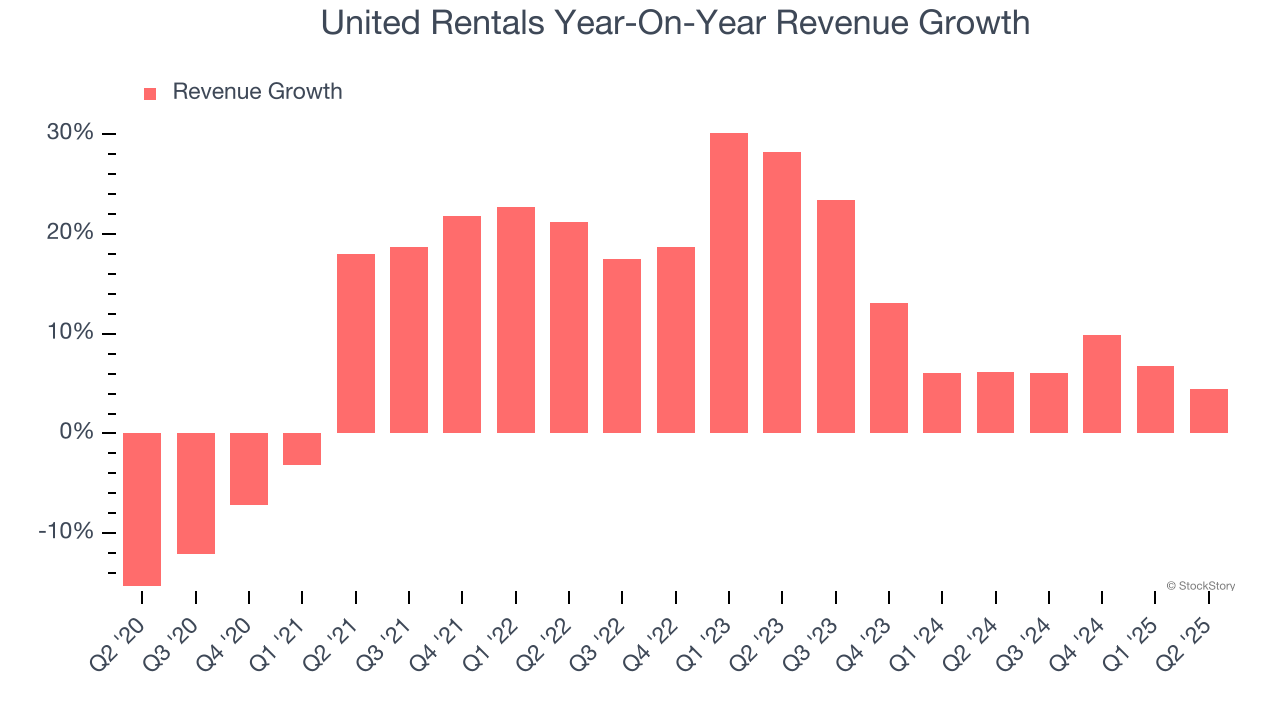
This quarter, United Rentals reported modest year-on-year revenue growth of 4.5% but beat Wall Street’s estimates by 0.8%.
Looking ahead, sell-side analysts expect revenue to grow 2.8% over the next 12 months, a deceleration versus the last two years. This projection doesn't excite us and suggests its products and services will see some demand headwinds. At least the company is tracking well in other measures of financial health.
Here at StockStory, we certainly understand the potential of thematic investing. Diverse winners from Microsoft (MSFT) to Alphabet (GOOG), Coca-Cola (KO) to Monster Beverage (MNST) could all have been identified as promising growth stories with a megatrend driving the growth. So, in that spirit, we’ve identified a relatively under-the-radar profitable growth stock benefiting from the rise of AI, available to you FREE via this link.
Operating Margin
United Rentals has been a well-oiled machine over the last five years. It demonstrated elite profitability for an industrials business, boasting an average operating margin of 25.8%. This result isn’t surprising as its high gross margin gives it a favorable starting point.
Looking at the trend in its profitability, United Rentals’s operating margin rose by 3.8 percentage points over the last five years, as its sales growth gave it operating leverage.
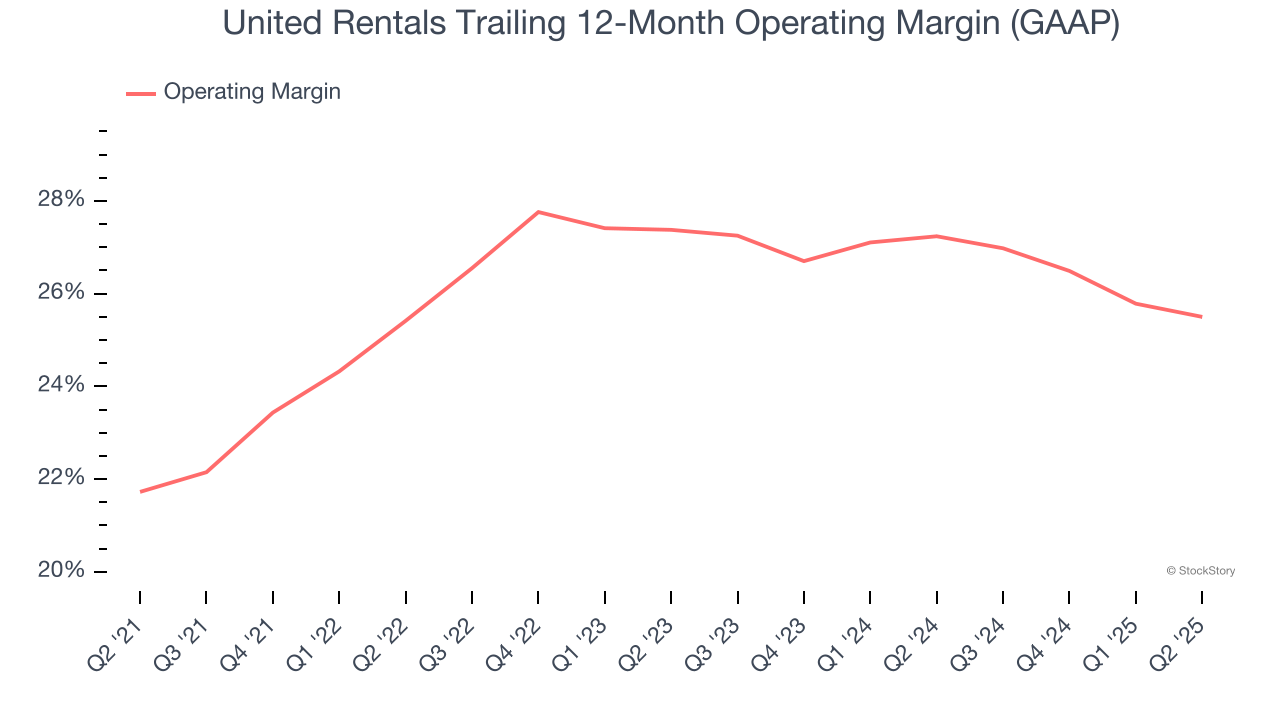
In Q2, United Rentals generated an operating margin profit margin of 25.4%, down 1.2 percentage points year on year. Since United Rentals’s gross margin decreased more than its operating margin, we can assume its recent inefficiencies were driven more by weaker leverage on its cost of sales rather than increased marketing, R&D, and administrative overhead expenses.
Earnings Per Share
We track the long-term change in earnings per share (EPS) for the same reason as long-term revenue growth. Compared to revenue, however, EPS highlights whether a company’s growth is profitable.
United Rentals’s EPS grew at an astounding 18.1% compounded annual growth rate over the last five years, higher than its 11.8% annualized revenue growth. This tells us the company became more profitable on a per-share basis as it expanded.
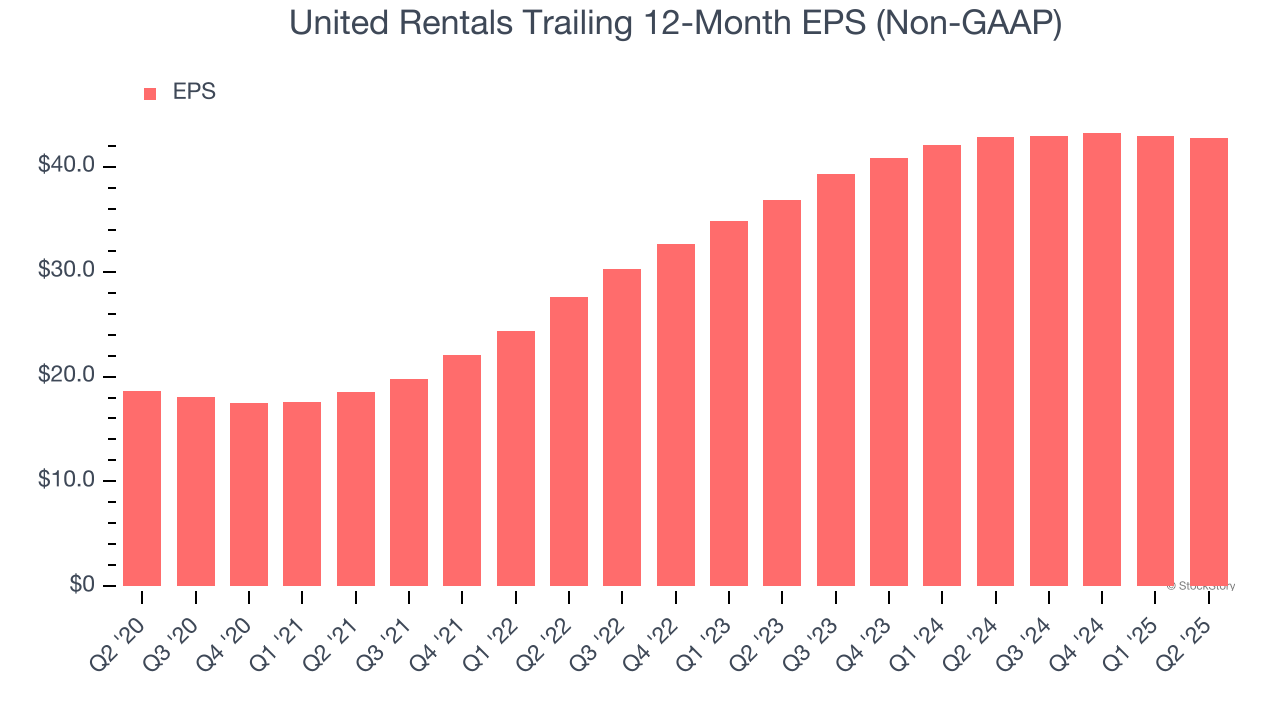
We can take a deeper look into United Rentals’s earnings quality to better understand the drivers of its performance. As we mentioned earlier, United Rentals’s operating margin declined this quarter but expanded by 3.8 percentage points over the last five years. Its share count also shrank by 10.2%, and these factors together are positive signs for shareholders because improving profitability and share buybacks turbocharge EPS growth relative to revenue growth. 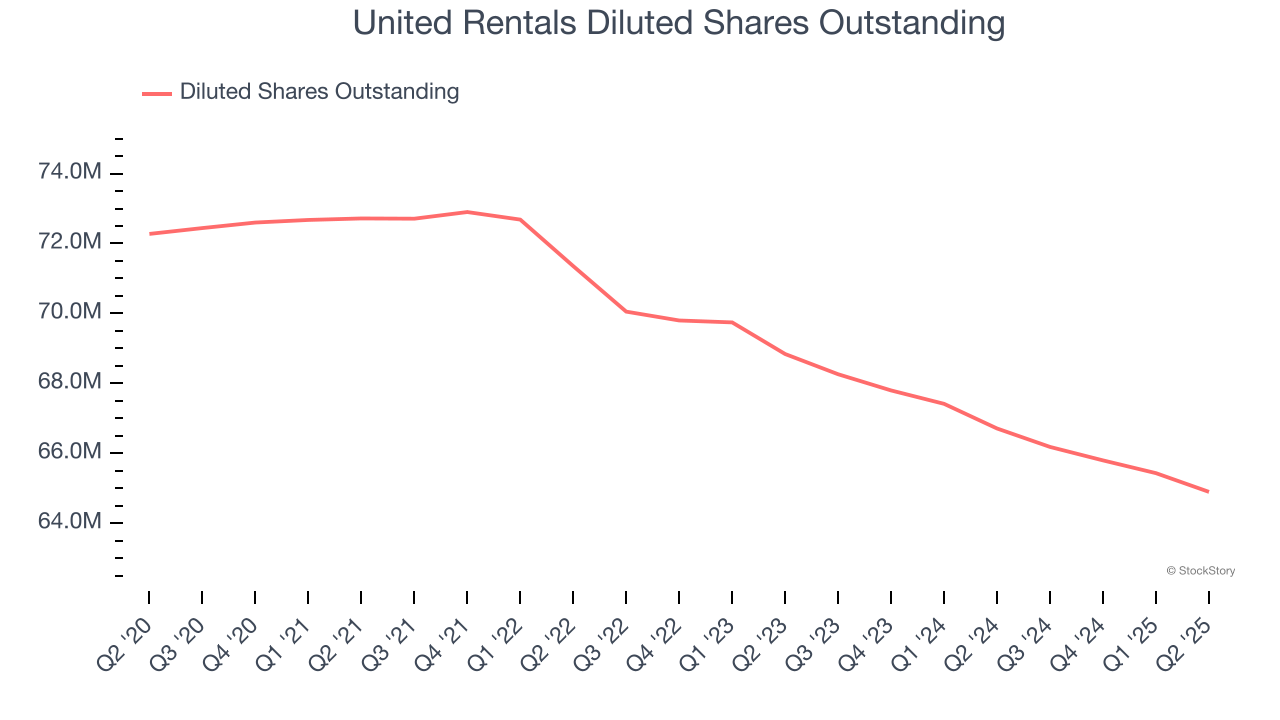
Like with revenue, we analyze EPS over a more recent period because it can provide insight into an emerging theme or development for the business.
For United Rentals, its two-year annual EPS growth of 7.7% was lower than its five-year trend. This wasn’t great, but at least the company was successful in other measures of financial health.
In Q2, United Rentals reported EPS at $10.47, down from $10.70 in the same quarter last year. This print was close to analysts’ estimates. Over the next 12 months, Wall Street expects United Rentals’s full-year EPS of $42.72 to grow 3.8%.
Key Takeaways from United Rentals’s Q2 Results
It was good to see United Rentals raise full-year revenue and EBITDA guidance, both of which came in ahead of analysts’ expectations. We were also happy its revenue narrowly outperformed Wall Street’s estimates, leading to a more convincing EBITDA beat in the quarter. Overall, this print had some key positives. The stock remained flat at $806.88 immediately following the results.
So should you invest in United Rentals right now? If you’re making that decision, you should consider the bigger picture of valuation, business qualities, as well as the latest earnings. We cover that in our actionable full research report which you can read here, it’s free.





